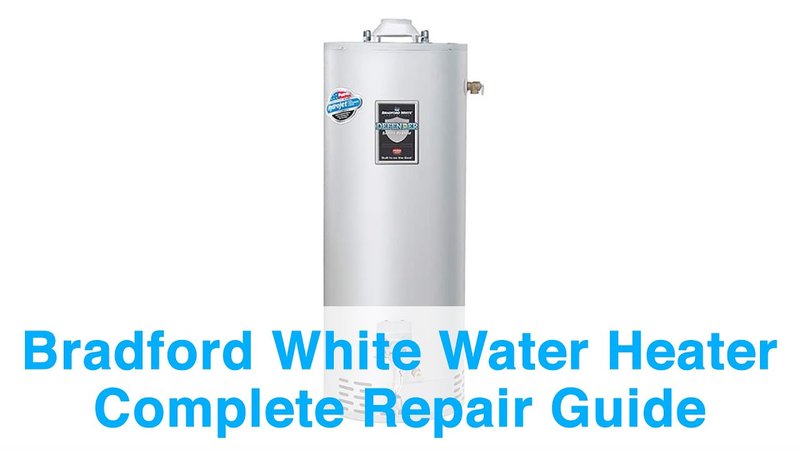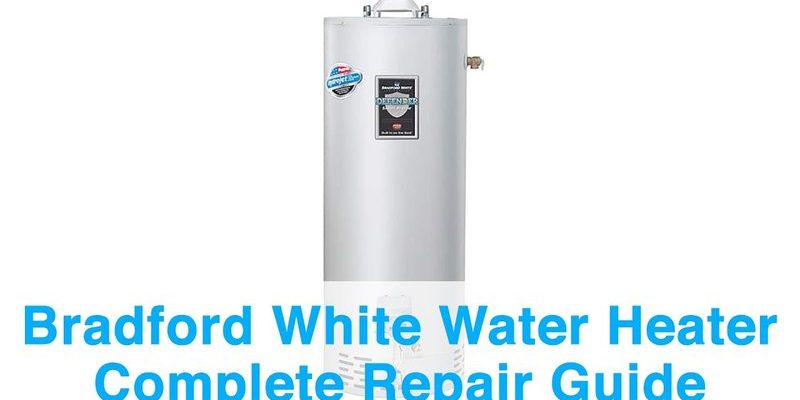
You might be wondering, “What does the E3 error code mean?” Simply put, it’s your water heater’s way of telling you that there’s an issue that needs attention—something akin to your car’s check engine light. The E3 error code is typically related to an issue with the system’s blower or a problem with venting, which can affect how well your water heater functions. But before you start feeling overwhelmed, let’s break down what you can do about it and when it might be the right time to call a technician.
Understanding the E3 Error Code
The E3 error code on a Bradford White water heater is basically a distress signal from your system. Imagine your water heater as a member of your home’s utility team—when it flashes E3, it’s saying, “Hey, something’s not quite right here!” Typically, this code indicates a problem with the venting system or the blower motor. The blower motor is responsible for helping the exhaust gases escape from your home. If it’s not working correctly, your water heater can’t function properly, and that’s when the E3 appears.
To understand this better, think of it like trying to blow out birthday candles. If the air is blocked, you’ll never be able to put out the flames. In your water heater’s case, if the venting is obstructing or the blower is malfunctioning, the system can’t “breathe” out the exhaust gases efficiently, causing it to trip and show an error. This might happen due to several reasons like debris buildup, mechanical failure, or even blockages in the venting pathways.
If you notice this error code, the first step is to ensure that nothing is obstructing your water heater’s venting system. Sometimes the cause can be as simple as something blocking the vent outlet, like leaves or debris outside your home. It’s always good to have a quick check before jumping to conclusions. But remember—if the problem isn’t fixable with a gentle cleaning or a quick inspection, it might be time to consider professional help.
When to Consider DIY Troubleshooting
Before rushing to call a technician, there are a few things you can check yourself. First, examine the venting system. Ensure there’s no physical blockage, such as bird nests or leaves, especially on the exterior vent. A clear passage is crucial for the blower to work effectively. Check to see if anything has accumulated over time that might be causing a blockage, and if safe, try to remove it carefully.
Next, listen for any unusual sounds from the blower motor. A humming or strange noise could indicate it’s not operating correctly. Like a car with a flat tire, a blower motor that’s struggling will often make more noise as it tries harder to work. If this is the case, you might have a component failing or a more intricate issue that requires professional attention.
Finally, consider resetting the system. Sometimes, just like rebooting a stubborn computer, resetting the water heater can clear minor glitches. Turn off the power, wait a few minutes, and then restart it. This can occasionally resolve the issue if it’s a temporary fault. However, if the error persists, it’s definitely time to call in the pros.
When to Call a Technician
If you’ve tried the basic checks and the E3 error code remains stubbornly in place, it’s wise to call a professional technician. Attempting to repair the inner workings of your water heater without the proper skills or tools can be like trying to perform surgery with a butter knife—not advisable and potentially dangerous.
A technician is your go-to person for diagnosing and fixing the more complex causes behind the E3 code. They have the tools and expertise to look deeper into issues like a failing or failed blower motor, complex blockages, or even wiring problems. These professionals can disassemble and inspect the unit safely, ensuring no further damage is done in the process.
Safety is another big reason to contact a professional. Water heaters deal with electrical components and sometimes gas, making DIY repairs risky if you’re not trained. A malfunctioning blower or venting system could lead to gas leaks, which are serious safety hazards. So, not only is it smart to call a technician for a fix, but it’s also a safer choice for you and your family.
Preventative Tips to Avoid Future Issues
To steer clear of encountering the E3 error in the future, regular maintenance is your best friend. Schedule annual checks with a technician who can inspect and clean the system, ensuring everything is in working order. Think of it like a routine health check-up for your water heater; it’s an investment in its longevity and efficiency.
Keep an eye on the area around your water heater, ensuring nothing is obstructing the vents or covering the unit. This ensures proper airflow and reduces the chance of blockages, much like keeping a window open to air out a room. Regularly inspect the exterior vent for debris or dirt that could build up over time, especially after storms or windy days.
Lastly, familiarize yourself with your water heater’s manual. Getting to know its quirks and basic troubleshooting steps can save you a lot of hassle. But remember, when in doubt, a professional’s input is invaluable. By staying proactive, you can keep your water heater running smoothly and extend its life, avoiding those inconvenient cold showers and disruption to your daily routine.
